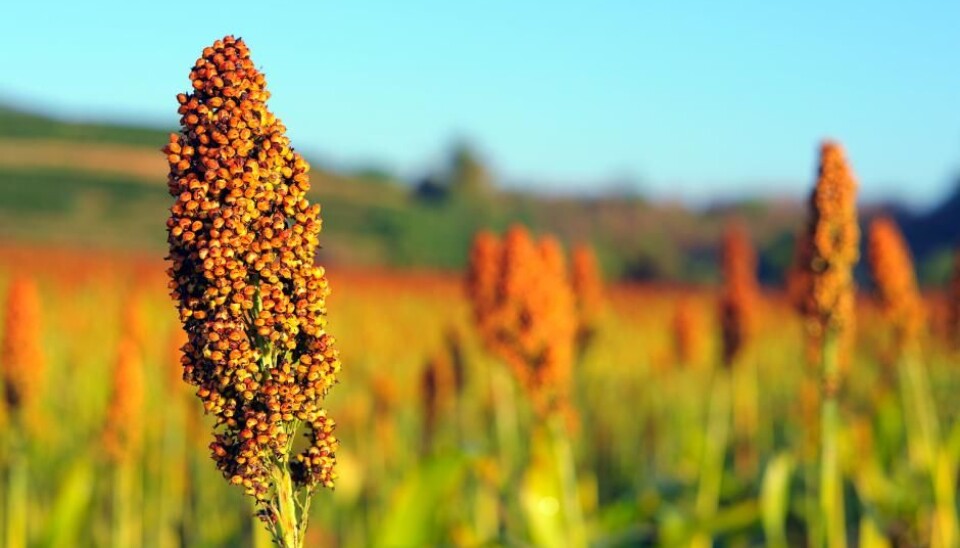
How plants use chemical weapons to protect themselves
Scientists have discovered how plants fend off insects and fungal attacks using chemical poisons like hydrogen cyanide.
It is not always fun to be a plant. With your roots firmly planted in the earth, there is no way to run away from an insect who wants to lay their eggs on your leaves, or when the larvae hatch and start eating you.
That is why all plants have developed defence systems to protect against insects and fungi that would otherwise devour their fragile leaves, seeds, or fruits.
Until now, scientists did not know how plants shifted between the many different types of defence systems that protect them against various types of attack. But now scientists have solved the mystery.
“The molecular building blocks of these defence systems make them flexible. It gives us new knowledge that we can use to make better crops and understand how plants can cope in a world with climate change,” says (lead author/co-author) Birger Lindberg Møller, a professor in the Center for Synthetic Biology at the University of Copenhagen, Denmark.
The results are now published in Science.
Colleague: a brilliant study
Ros Gleadow from the Faculty of Science at Monash University, Australia, describes the new results as nothing less than brilliant. He was not involved in the new research, but he also studies the types of plants that are included in the new study.
The scientific community had many doubts about the mechanisms that Møller and his team have now mapped, but there is now no doubt of how this mechanisms works, she says.
“There’s a lot of data behind the study. Good science takes time and creativity,” says Gleadow.
The new study leads the way towards a better understanding of how we can produce plants that are able to withstand the threat of climate change.
“We need to develop healthier and more sustainable crops that make more efficient use of fertilisers, and are able to tolerate extremes of heat and chronic drought. The study opens up new ways to address these problems and create crops that are safer to eat. I’m very excited about these possibilities,” she says.
Read More: Scientists are "teaching" plants to use insects as a natural defence
Almonds protect themselves with chemical weapons
Many plants have an inbuilt defence system that, when activated, releases hydrogen cyanide to ward off insects and fungi.
It is directed at the part of the plant under attack. This is what makes bitter almonds, apricots, and apple pips toxic when crushed.
But plants have many different defence systems that can be activated individually, depending on the type of threat they face.
“Each plant should be able to quickly, flexibly, and precisely, convert its metabolism to produce the new type of defensive agents,” says Møller.
Read More: New technology eliminates plant toxins
Plants use cyanide to defend themselves
Take for example bitter almonds, apple cores, or the African sorghum, that all use cyanogenic glycosides in their defence.
Cyanogenic glycoside by itself, is a harmless, bitter substance that transforms into cyanide when the cells that contain cyanogenic glycoside are destroyed. For example, when a human or an insect eats them.
At this point, the plant releases a cyanide bomb directly onto the attacker.
The cyanide makes the insect sick and it stops eating the plant.
Even a cow can be poisoned and die after munching away on a field of sorghum.
“This highly specialised defence is the key to a plants survival, and cyanide is just one of many different toxins that plants produce in response to various types of attacks,” says Møller.
Read More: Primitive worms threaten harvests
Plants can sense insect saliva
Møller and his team have discovered exactly what happens in the plant at the molecular level, when they release the cyanide.
Previous research has shown how plants are able to recognise specific different insect larvae via signals registered from enzymes in the larval saliva.
This allows the plant to create a unique complex of toxins or defence molecules to attack different insects.
Customised defence mechanisms
The constant replacement of the components enable the plant to quickly make different defensive agents to combat a range of threats.
At the same time, the plant has to be careful that it doesn’t release poisonous intermediates that can damage the plant, says Møller.
“So each of the components of the enzyme complex are collected very precisely in relation to each other, making the enzyme complex a perfect assembly line, from where the finished defensive agents can escape,” he says.
The membrane and the specific molecular components must all be present for the enzyme complex to function.
“The enzyme complex is like a guard dog. It quickly moves around the plant cell membrane and can produce defensive agents where they’re most needed. For example, where mildew spores land and will attempt to invade the plant cells,” says Møller.
Read More: Ancient crops are the future for our dinner plate
How will plants respond to new threats?
According to Møller, it is important to understand the plants defence mechanisms in order to know what the future may hold for plants as the climate continues to change.
Insects and other pests will relocate to new areas--previously untouched by these pests--where unsuspecting plants may be unable to withstand their attacks.
The new results will help scientists understand how plants may try to defend themselves against these new attacks.
-------------
Read the Danish version of this article on Videnskab.dk
Translated by: Catherine Jex




